|
Jet Provost by John Bilcliffe
Life for the Jet Provost began in the early 1950s at the Hunting Percival factory at Luton, a think tank team was formed to try and design a jet powered trainer using as many parts as possible from the old Piston Provost TMk1 airframe ,with a proven airframe and costs to a minimum the project was given the design code P84.
Early designs with the intake in the nose area, put forward by an L.G. Frise, were rejected in favour of the design we have come to know today. Eleven TMk1s were built with the first to fly on the 26th June 1954 at Luton with a Dick Wheldon at the controls, powered by the Armstrong Siddeley Viper ASV 5 1640 lb thrust engine.
In the hay day of British aero engine prodution, themes were chosen to name various engine types, i.e snakes for the Armstrong Siddeley engines, rivers For the Rolls Royce factory units, and spirits for the De Havilland factory's power units.
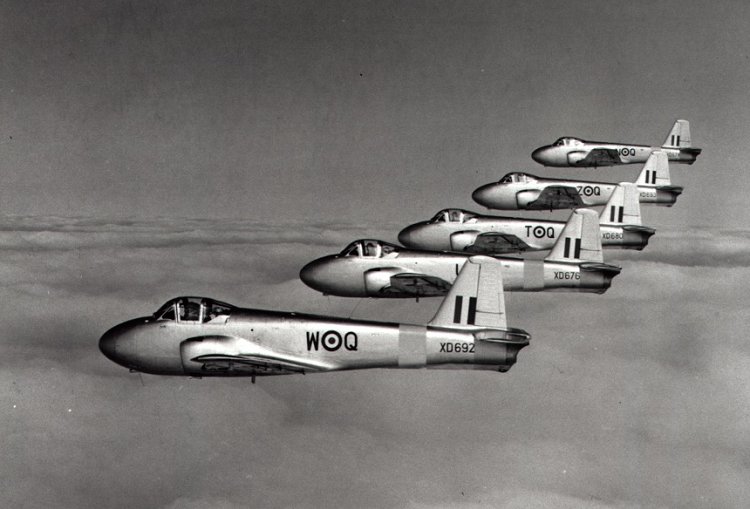
Trials were carried out, and after the first course of students had undertaken instruction at No2 Flying Training School, Hullavington, a Pilot Officer R.T. Foster was the first to solo on the type on October 17th 1955 after just 8hrs 20mins instruction. It was found that the TMk1s long legs were wobbly and would walk during taxi, this was an oversight carried over from the Piston Provost whose legs were long to give the propeller clearance.
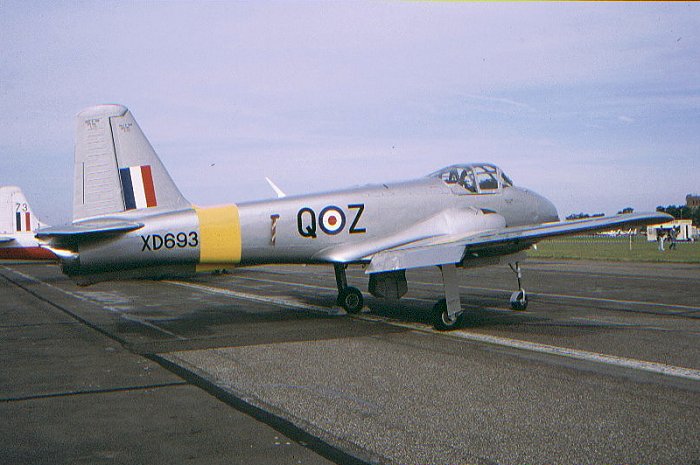
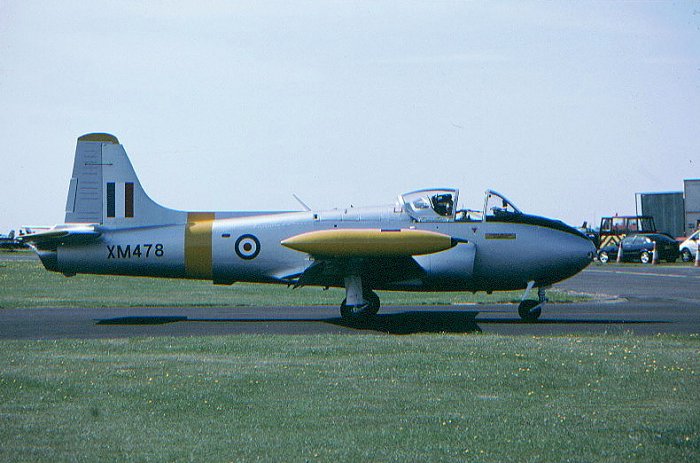
Using the last of the batch of TMk1s (XD 694) a project was carried out, still under the design code of P84, to make a TMk2 version. This version was upgraded by adding hydraulic retractable undercarriage, uprating the power unit to the ASV8 1750lbs thrust engine, an increase in the span of flap and at this point also plans were made for the provision of light armament for future use. Fitment of the radio and electrical equipment were housed in the nose area and the tail unit was redesigned to give better installation for the jet pipe. First flight of the TMk2 was September 1 1955 by XD694.
Four of this type were made, these being the limited production development version for the production J.P.Mk3. XD694 flew with Hunting for 143hrs development work, went to Boscombe Down for a further 45hrs flying, and was then sent to 2 FTS where it flew a further 260hrs and nearly made 1000 landings during its instructional period work.
|
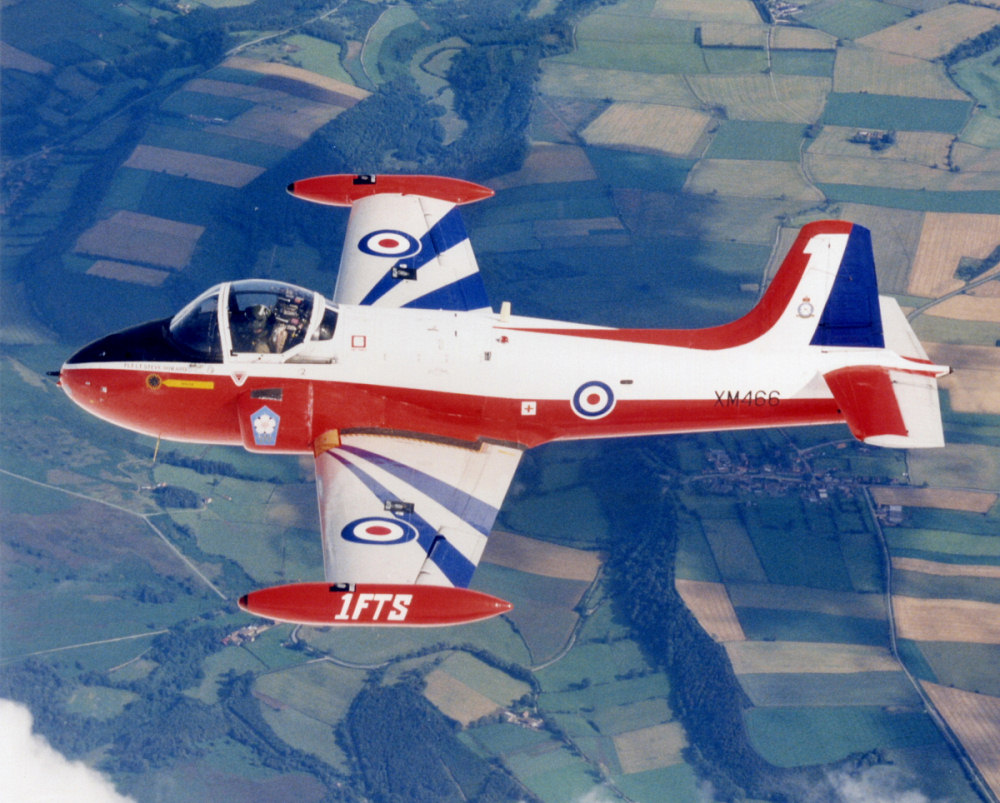 |
|
Its last days were spent at Armstrong Siddeley on engine development before finally being scrapped in 1960. It seems such a shame that such a hard worked little aircraft couldn't have found a space in someones museum, just for the sake of preservation, instead of the reward of the knackers yard.
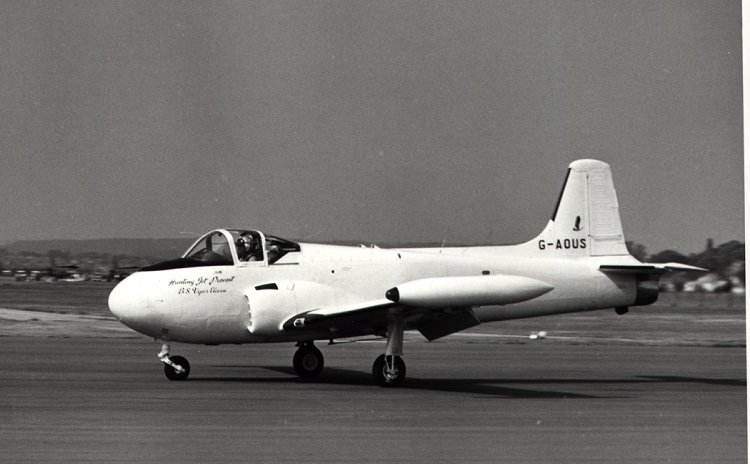
Of the other Mk2s, G AOUS was the company demonstrator fitted with the powerful ASV11 Viper of 2500lbs thrust later to be used in the Mk4 version, this aircraft crashed near Biggleswade on Nov 16 1960. G AOHD went to Australia with the number A99 001 for trials for the RAAF. Last but not least, one Mk2 was given the B class registration G 23 1, the same aircraft was later serialled XN117, which was then used as the converted prototype TMk3 in ground attack trials in Aden in 1958, ending its days being dismantled and scrapped at Luton.
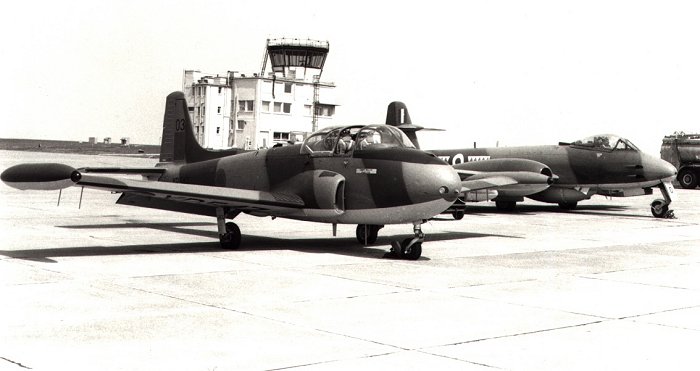
Next version was the TMk3 type, this kept the same power unit as before, the ASV8, but a new bubble type moulded canopy was fitted along with two 50 gallon wingtip tanks, Martin Baker mk4 ejection seats were fitted, and first production aircraft XM 346 flew on June 22nd 1958. First course to use the Mk3 was at No.1 FTS Linton On Ouse on October 19 1960. Around this time the Mk4 was making its debut in September 1960, having been shown at the Farnborough air show, this was the G.T. version fitted with the Viper 200 series engine the ASV11 2500lbs thrust giving the Mk4 about 40% more thrust, giving it a climb rate nearly twice that of the Mk3. Three aircraft were used in the development of the Mk4 these were T2 G AOUS and 2 Mk3s XN 467 and XN468. First flight being around July 1960. I dont have an exact date for this Mks first flight.
The Jet Provost Mk5 was developed by the now British Aircraft Corporation as Hunting joined forces with this large
manufacturer in the mid 1960s using the last 2 production Mk4s, XS 230, and XS 231.
|
The project plane became known as the BAC 145. XS 231 was given the Viper ASV20 engine 3000lbs thrust , and was labelled the BAC 166 which was the developmental aircraft to make the ultimate J.P, the Strikemaster, it was given the civil reg of G ATAJ.
The Mk5 version was the ultimate design in that it was a pressurised version, with a newly designed canopy.
First flight of the Mk5 was made from Warton on the 28th February 1967.
Export models of the Mk3 and Mk4 were made, these being Mk51, and Mk52, being lightly armed they were a cheap option for the Middle East countries. The BAC 167 Strikemaster was sold woldwide and each country of sale having its own variation - MK80 Saudi Arabia, Mk 81 South Yemen, Mk82 Muscat and Oman, Mk83 Kuwait, and Botswana, Mk84 Singapore, Mk87 Kenya, Mk88 New Zealand, Mk 89 Ecuador, and Mk90 Sudan.
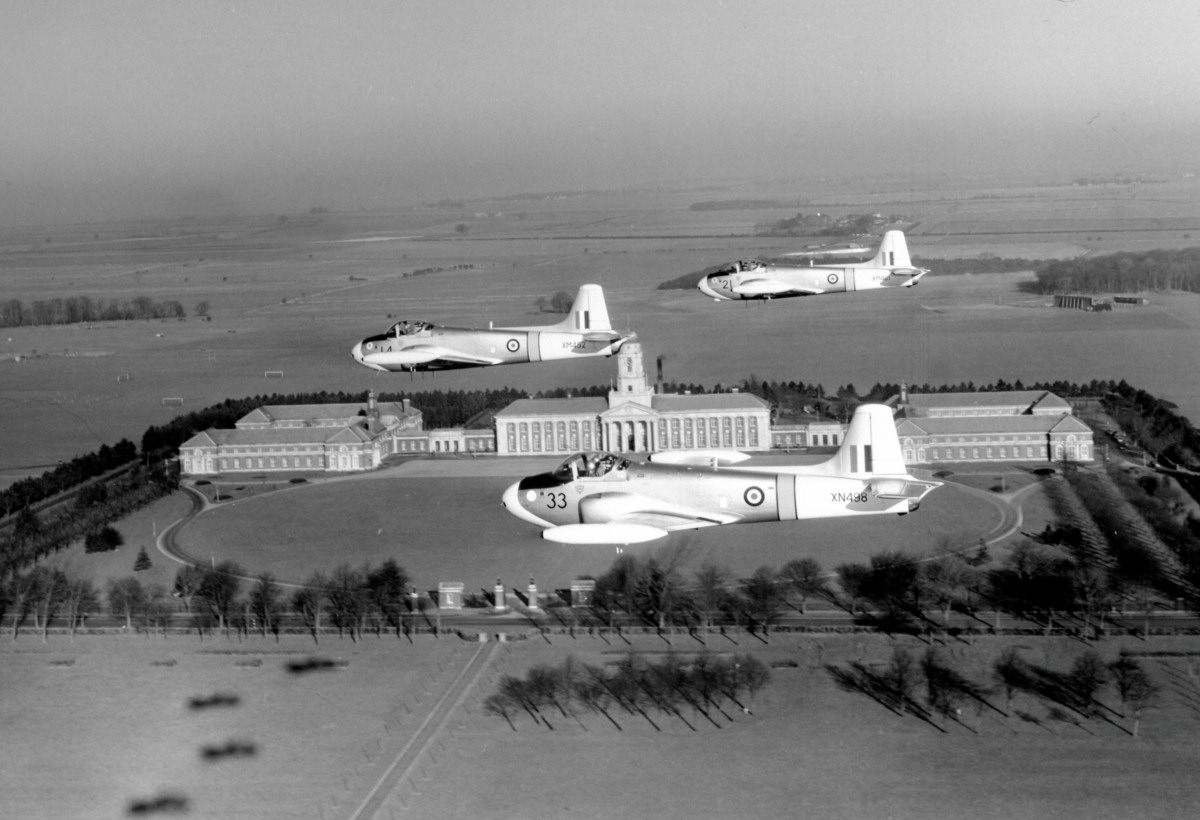
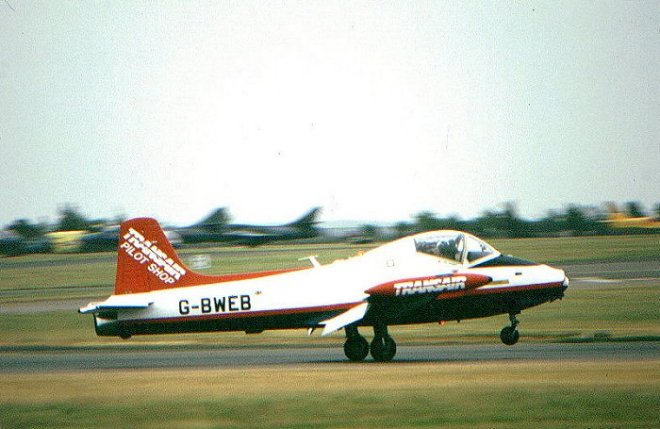
Last to my knowledge to receive instruction on the Mk5a was a Flying Officer Nigel Courtis No1 FTS 25th June 1993. During the mid '70s both the TMk3 and TMk5 were given modifications to uprate such equipment as the avionics, navigation, and radio equipment. 70 Mk3s were up rated from 201 made and 107 from 110 Mk5s were converted. Another variant was the TMk 5b, given the designation as it was only used by 6 FTS for navigational training, it also carried 2 wingtip tanks .
The places within the RAF where the Jet Provost were used were 1 FTS Linton On Ouse, 2 FTS Hullavington and Syerston, 3 FTS Leeming, 6 FTS Acklington and Finningley, 7 FTS Church Fenton, CFS Little Rissington, RAF College Cranwell, CAW Manby, Shawbury central air traffic School.
There are now over 20 J.Ps in private hands scattered around the country, and with the fact that you only need a P.P.L to fly a Gnat its the rich mans hobby, and easy way to learn to fly on a jet type to gain experience.
|
